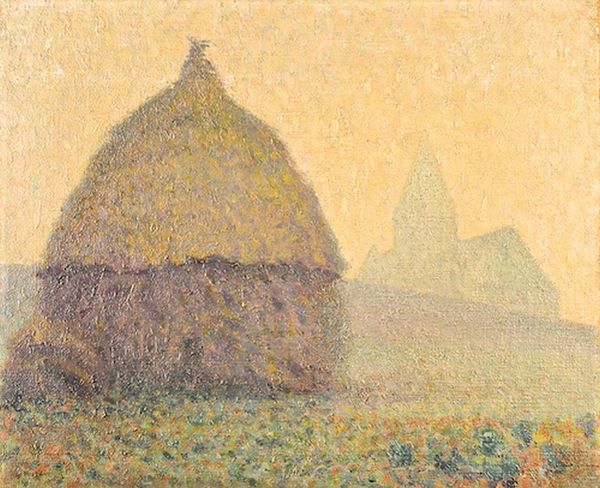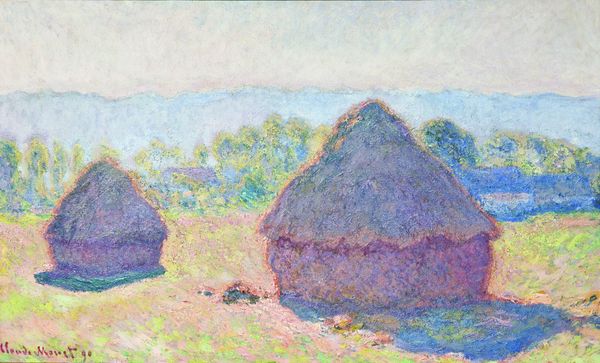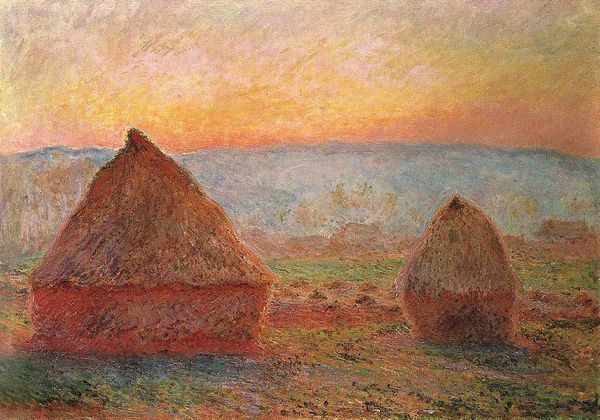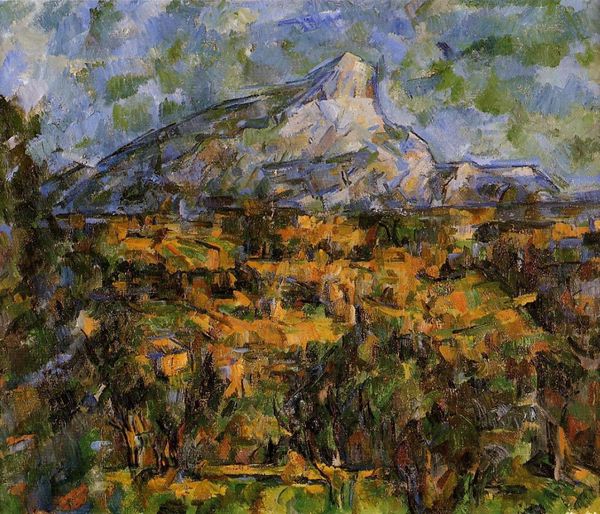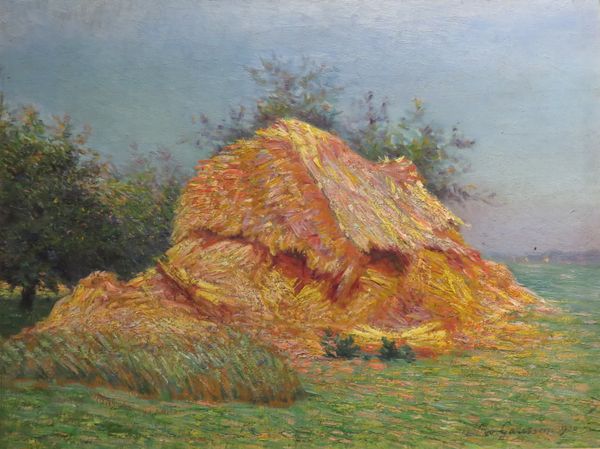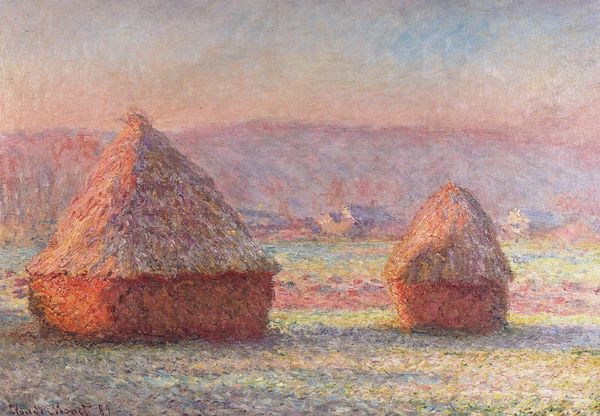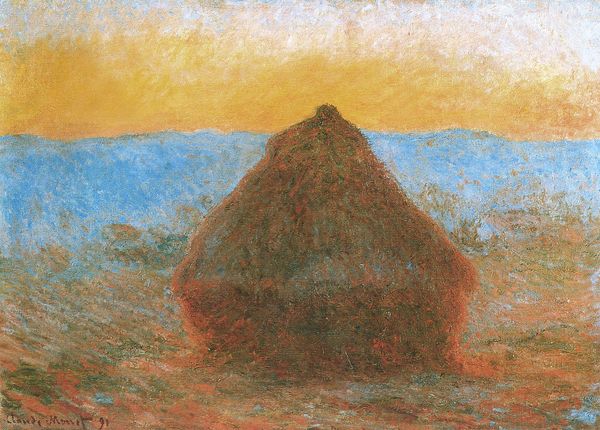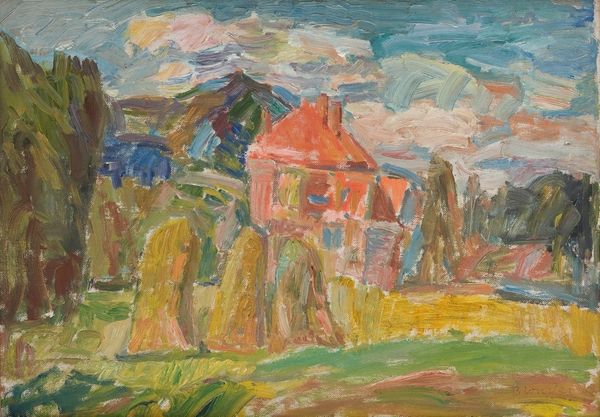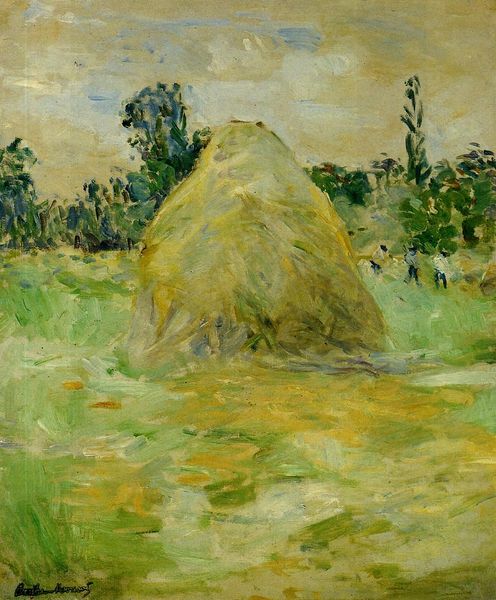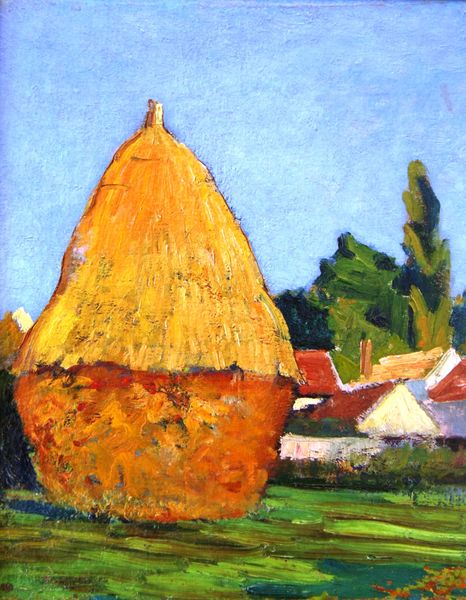
Copyright: Public domain
Léo Gausson created this oil on canvas painting, "Les Meules près du chemin," or "Haystacks Near the Path", sometime in the late 19th or early 20th century. Gausson's painting, with its rural scene and impressionistic style, speaks to a period of significant social and economic transition in France. The late 19th century saw the rise of industrialization, drawing people away from rural life and into urban centers. Artists like Gausson, trained in the modern academies, were both a product of the new social order and, in some ways, resistant to it. His focus on the beauty of the countryside and the simplicity of rural life can be seen as a commentary on the changing times. This, in turn, may represent a longing for a more idealized past and a critique of the modern world. To fully appreciate Gausson's work, we need to delve into the cultural and economic history of France at the turn of the century, using resources like agricultural records, social surveys, and exhibition reviews to understand the complex relationship between art, society, and the changing landscape.
Comments
No comments
Be the first to comment and join the conversation on the ultimate creative platform.
